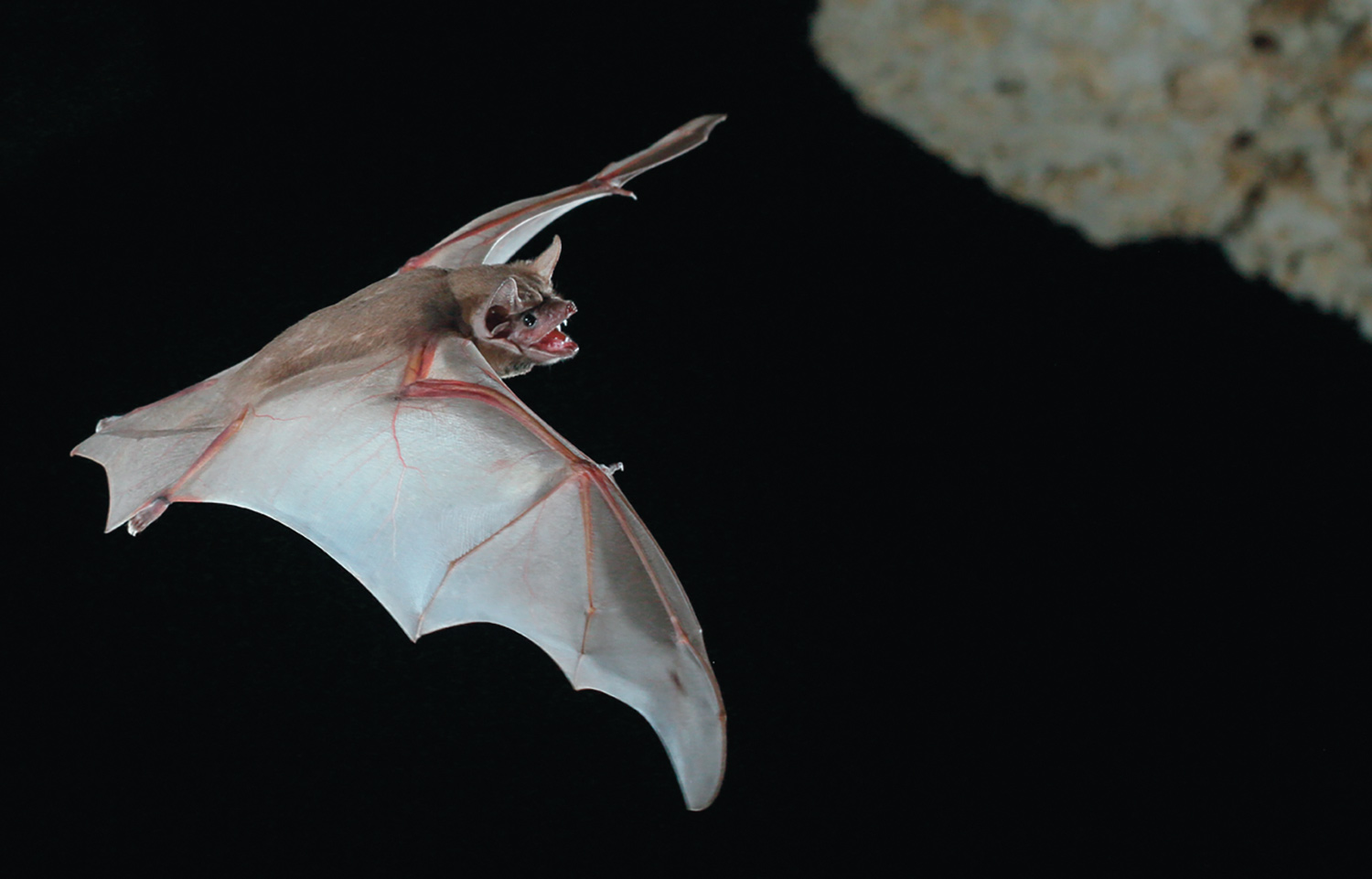
Hildegarde’s Tomb Bat
Binomial
Family
Colony size
Weight
Diet
Status

long the coast of Kenya and Tanzania lies a narrow strip of land riddled with caves that provide essential habitat for a species found nowhere else: the Hildegarde’s tomb bat (Taphozous hildegardeae). This high-flying, sheath-tailed bat roosts in the caves and forages in dry coastal forests and scrublands, from Malindi in the north to Dar es Salaam in the south, as well as the islands of Pemba and Zanzibar. The species is increasingly threatened due to habitat destruction and other activities in and around the caves.
In 2020, the International Union for the Conservation of Nature (IUCN) officially listed the Hildegarde’s tomb bat as Endangered due to its limited range, fragmented colonies, and habitat decline. According to Dr. Paul Webala, senior lecturer in wildlife biology at Maasai Mara University in Narok, Kenya, who is co-author of the IUCN report, the population of Hildegarde’s tomb bats in Kenya may number fewer than 10,000—possibly no more than 5,000—bats. The numbers in Tanzania are unknown.
While some of the bat’s Tanzanian range may fall within protected areas, most of its habitat in Kenya consists of unprotected community lands. Local people regularly enter the caves for various reasons, including tourism, religious purposes, and mining guano for fertilizer.
“There are a lot of uncontrolled visitations, and this creates a lot of stress for these bats, and they may shift to other temporary roosts, which we don’t know where they are,” says conservation biologist Dr. David Wechuli, who specializes in Kenyan bats. Another source of disturbance is the clearing of vegetation for farming and charcoal mining, which has contributed to habitat loss and fragmentation of the dry coastal forests where the bats forage.
Dr. Webala and his colleagues have been working on community outreach and public education for the Hildegarde’s tomb bat and other species. He says misconceptions have led people to light fires in caves and try to close them. That’s why researchers are trying to teach people about bats’ critical role in the ecosystem.
Overall, Dr. Webala says, the aim is to get local people to understand that the bats “are part and parcel of biodiversity—without them, the ecosystem is likely to collapse because each species depends on another as part of the food chain.” As an insectivorous species, the Hildegarde’s tomb bat is essential in controlling insects, including agricultural pests and mosquitoes that transmit malaria.
More research is needed to better understand the species’ distribution, use of the caves, and population trends. “Once we know where these bats are, then we must be able to protect those areas, then bring in other questions,” explains Dr. Wechuli. “What are the population sizes? Where are they moving to? Are there any other roosts along the coastal region that we need to protect?”

—Dr. Ana Ibarra
While other bat species also use the same caves in large numbers, Dr. Webala fears that Hildegarde’s tomb bats are so few that the species will ultimately disappear if nothing is done to curb the clearing of forests and closing of caves. The bat’s limited range makes it more vulnerable than more widespread species. Dr. Webala believes the species’ numbers are so low that the IUCN should upgrade the Hildegarde’s tomb bat from Endangered to Critically Endangered.
In addition to restoring critical habitat and stopping direct threats to the bats, conservation goals include setting aside important caves as protected areas and establishing a more managed form of tourism, with controlled visitor numbers, trained tour guides, and admission fees paid to local communities so that they will see the caves as important to the local economy. Another aim is to limit mining guano, perhaps through a quota system, to mitigate uncontrolled exploitation.
Because most of the research on the Hildegarde’s tomb bat has been conducted in Kenya, less is known about its conservation status in Tanzania. Another important goal is to implement a monitoring program to track the species’ movement patterns, as well as partner with Tanzanian colleagues to understand the species there and its population status.
“We don’t know what is happening on the other side [of the border],” Dr. Wechuli says. “Maybe there, they are safer than on this side, or they may be much safer on this side than the other side. So, it would be good to also look at that.”